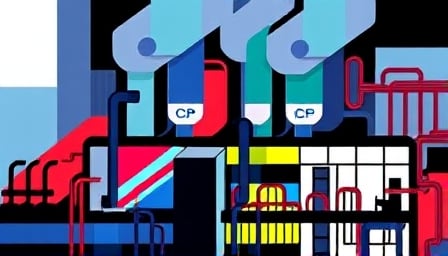Air Products & Chemicals Inc. Faces a 4.7% Decline: A Corporate Misstep in a Booming Hydrogen Era
Air Products & Chemicals Inc. (NASDAQ: APD) has slipped into a bruising slump, with its share price tumbling by 4.74 % over the last five years. A modest investment of $1,000 that once promised growth is now valued at $952.65, underscoring a disappointing performance that rivals a quiet underachievement in an otherwise electrifying market.
Market Valuation vs. Real Performance
The company’s market capitalization—a staggering $64.38 billion—suggests a robust corporate stature. Yet, market cap alone masks a stark reality: the stock has not kept pace with the broader Nasdaq index, despite no solid comparative data to confirm a superior benchmark. Investors who bet on APD’s leadership in industrial gases and hydrogen are now witnessing a tangible erosion of value that no longer justifies the premium price tag.
The Hydrogen Boom: A Mirage or an Opportunity?
In a climate where hydrogen is heralded as the clean‑energy pivot, APD’s share price decline appears paradoxical. Industry analysts project a significant upsurge in the hydrogen market driven by global decarbonization mandates. This trajectory should, in theory, fortify the fortunes of any company positioned to supply industrial gases, including hydrogen. Yet APD’s recent performance suggests a misalignment between corporate strategy and market expectations.
- Strategic Missteps? The company’s expansion into new geographies and product lines has not translated into share‑price appreciation. Investors are wary of the “growth without profitability” narrative that has begun to dominate APD’s communications.
- Operational Inefficiencies? While APD boasts a sophisticated supply chain, recent quarterly earnings indicate margin compression and an inability to capitalize on the surge in demand from sectors such as chemicals, electronics, and healthcare.
- Competitive Pressures? Rival firms are accelerating their hydrogen initiatives, leveraging tighter cost structures and faster deployment timelines. APD’s lag in scaling up production capacity is becoming increasingly evident.
The Industrial Gases Sector: A Growing Market with Rising Expectations
The broader industrial gases market is projected to reach $126.5 billion by 2030, a figure that highlights an expanding customer base across multiple verticals. Air Products & Chemicals Inc., as a key player, is expected to reap significant benefits from this growth. However, the company’s failure to capture a larger market share—reflected in the modest 4.7 % stock decline—demonstrates a disconnect between its market positioning and its financial performance.
What Does This Mean for Investors?
- Reassess the Risk–Reward Equation: A 4.7 % decline over half a decade is not trivial. Investors must weigh this erosion against the promise of hydrogen-driven growth.
- Demand Transparency: APD’s management should provide concrete evidence of how it intends to translate its hydrogen expertise into tangible returns. The absence of such data fuels skepticism.
- Scrutinize Operational Metrics: Profitability, cost structure, and production scalability must be transparently reported to restore investor confidence.
Conclusion
Air Products & Chemicals Inc. stands at a crossroads. Its stock performance has not mirrored the sectoral optimism surrounding hydrogen and industrial gases. As the industry accelerates toward a low‑carbon future, APD must recalibrate its strategy, align its operations with market expectations, and deliver clear, data‑driven evidence of its value proposition. Until then, the company’s stock will likely continue to reflect the gulf between potential and execution.
